LG Google TV Review
by Jason Inofuentes on October 2, 2012 9:00 PM EST- Posted in
- Google TV
- Media Streamer
- Media Player
- LG
- Honeycomb
- Android
- LG L9
- LG G2
LG has a line of Smart TVs that exists in parallel to their Google TV efforts, and it has its own distinctive UI. It’s this UI that LG brought to, and set atop, Google TV. So, where Google TV is full of bright colors set atop a black background, the silver/grey motif of LG is a bit distinct. The arrangement of icons is also distinct from Google TV.
LG’s UI is a triptych of panels with either content or grids of icons. The left most panel is topped by the current content, and below that an ad for the device itself (this seems odd but I imagine it will eventually host affiliate advertising). The next panel is for Premium Apps; these are generally among the better and certainly more recognizable app options on Google TV. The panel is arranged as a 3x3 grid, with the top left-most location devoted to the panel title that can be selected to reveal additional Premium Apps.
The third panel is for LG’s 3D World, a collection of curated and streamed 3D content. Clicking on an icon there will send you to a website that actually hosts and presents the content. Some of this content is somewhat novel, but if it disappeared you wouldn’t miss it. A second screen full of panels is to the right of these, though 3D World shows up in each. The other two panels are Bookmarks, which of course open to their respective links in Chrome, and Frequently Used Apps which is a rotating set of apps based on your usage. This is far handier than the 3D World panel, but there’s no apparent way to change the panel order.
Along the bottom is a dock full of icons, including, oddly, a Home button. The idea is that this should be persistently accessible, but I only ever see it when I hit the Home button. A notification alerts you to app activity, and next to that an App Drawer gets you access to all the apps available. Live TV comes next, alongside another link to 3D World. TV & Movies follows and is an elegant aggregator of content available online and through your cable provider. Selecting a piece of content will lead you to the appropriate app or website, or, if you have the IR blaster configured to control your set-top box or DVR, tune to that content or schedule a recording. Next is the Spotlight Gallery, an occasionally redundant feature that brings together various web apps for content partners that don't have Android specific apps. The requisite YouTube app comes next, followed by the Play Store, Chrome, and a Search button.
Within all versions of Android there has been a persistent battle to decide what the best paradigm for accessing certain functions should be. Eliminating hardware buttons has been a crusade of Google’s for sometime, but the result is redundancy. Here we have a Search button on a Home screen in a use paradigm that includes a Search button on the controller that will be used to access that Home screen. So, yeah, the battle continues.
Let’s talk about Search for a minute. When we talk about Google Search on the web we’re talking about searching for web content. When we talk about Google Search on your phone we’re talking about searching for Contacts, Apps, and web content. When we talk about Google Search on your TV we’re talking about video content, and this is where Google has its greatest success.
A simple search for ‘Indiana Jones’ will take you to listings for various Indiana Jones films through the TV & Movies app. There are two things to note here, though. First, we’re not looking at the actual links to the apps with the content. So if one of the movies is available through Amazon Instant Video, we don’t see that. Instead we are sent to Google’s aggregator, TV & Movies, one more step than necessary. The other thing to notice is that the full breadth of Google’s search skills are not at work here. Absent from the listed Indiana Jones movies is Raiders of the Lost Ark, the first of the Indiana Jones films. Lacking the name Indiana Jones in the title makes this unexpected, if it weren’t for the fact that we know Google Search is more capable than that. The same search on the web gives us two Wikipedia topics, the actual website for the franchise, and IMDB links to the most recent Jones film, and the first, Raiders, in that order.
Now let’s chase down one of those links. Under Indiana Jones and the Kingdom of the Crystal Skull, we find a description of the film, its cast, the box art, and a disturbingly huge section devoted to telling us more about related content. But look to the left under the box art: Unavailable. If this movie was available for Rental or Purchase in one of the associated content partners it would offer the option to Rent or View the content. In this case, it shows nothing. Why wouldn’t this be acknowledged in the Search results? Look back at that section for related content; each of those films is available for rent or purchase. If the search results hadn’t brought us to this mostly useless page, we wouldn’t know that while we can’t watch the content we searched for, we can watch one of the Transformers sequels.
The Magic Wand
All the icons and panels are nothing without a way to access them. Logitech’s solution was one of their fine media-centric wireless keyboards. Sony’s solution was like the awkward offspring of a QWERTY keyboard and a Playstation controller. Both were effective if a little bulky. LG’s solution is called the “Magic Wand” remote; and the experience is not dissimilar to using a Wiimote with a QWERTY keyboard strapped on its back side. An on-screen cursor follows your movements with the wand, and a scroll wheel and directional pad compliment the experience, along with volume and channel buttons, and assorted other function keys. Flip the remote over and you have a keyboard replete with a number pad, playback controls and directional keys.
As elegant a solution as it seems, the execution isn’t quite up to scrutinization. The motion control isn’t 1:1 and accuracy is affected by speed of motion, so accuracy depends on adjusting to the sensor’s characteristics. But if your target is particularly small, say pressing a link on a website, pressing the selection key often causes enough movement to throw your aim off. A Wii Plus style improvement in tracking accuracy would allay many of these issues, and decreasing the pressure needed to depress the selection key would seal the deal.
The keyboard isn’t without its issues either. They keys themselves are small but perfectly pressured rubber nubs with a very satisfying click on activation. Unfortunately, the arrangement of the keys leaves me a bit perplexed. The far left side is dominated by the number pad, with letter keys in between and some directionals and other keys to the right. Along the bottom are other assorted keys including the Fn, Shift, Ctrl and playback control keys, and then the Android specific Search, Back and Menu keys.
The first concern is that none of these keys are backlit, and in a high end media device, lacking a backlight on your keys is damning indeed. Second, a few traditional media keys (Input, PIP toggle, Information, power switches for external devices) are absent on the main side and fall in as alternate functions on the number pad. Their proximity to the Fn key makes it awkward to squeeze your thumbs into the small space and depress them together. If there were gestures that replaced these functions (Input control, in particular) then this might be a non-issue. Instead, switching from one input to another involves either contorting your thumbs or returning to the Home screen and pressing one of the smaller on screen buttons.
All told, this isn’t a bad way to control a television with a rich graphical UI, but LG's utter devotion to this approach is a conceit too far. Waving the wand to bring up the cursor and running it over to the appropriate button to do something as simple as pausing playback simply isn’t more efficient than hitting the pause button. As a first effort, there’s room for improvement, for sure. But then, that’s true of all the television UIs we’ve encountered.


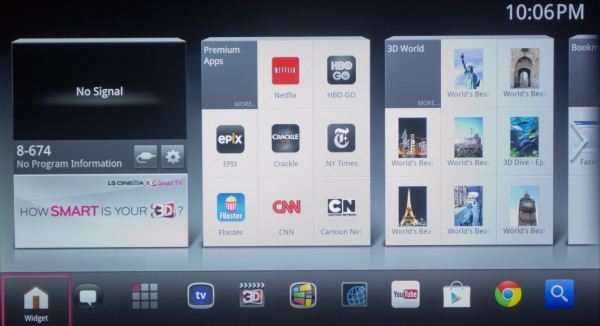
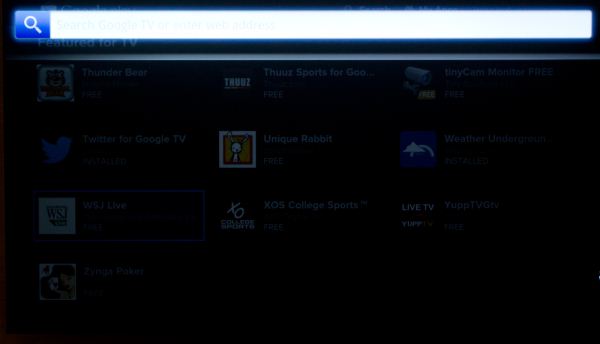
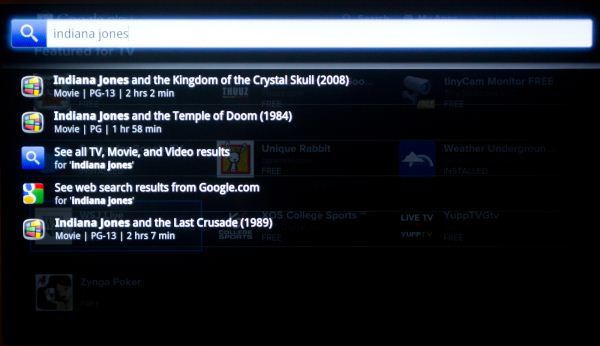
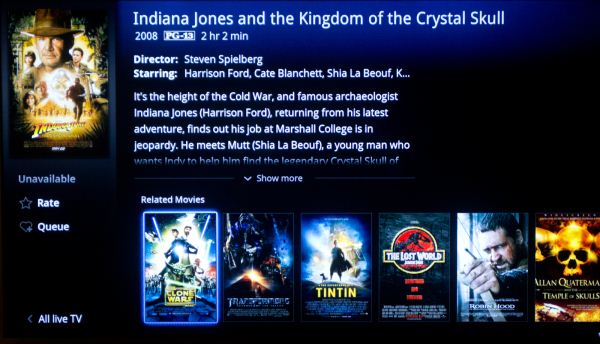






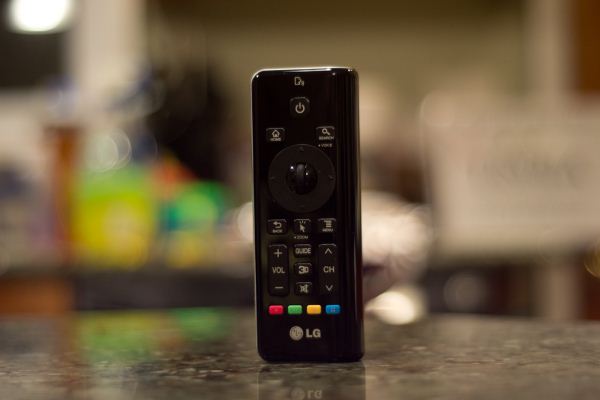
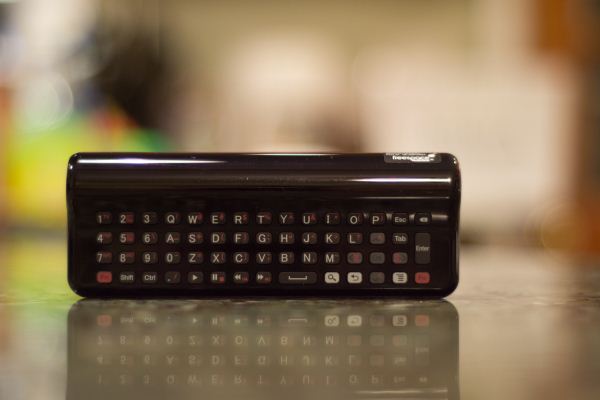








50 Comments
View All Comments
JasonInofuentes - Wednesday, October 3, 2012 - link
Great points, though I take issue with the tablet-as-remote concept. That's a lot of baggage and the technology exists to make a smart remote that is aware of device states. If all your components (source, display, receiver) are connected via HDMI 1.4 and use CEC for command and status, and Bluetooth is used as the protocol for communicating with the remote, then you could have a Logitech-like remote with macros that can modify the macro on the fly to reflect current states. Trouble is, not everyone implements CEC.I entirely agree that the ideal would be for a single interface to be able to query the full range of possible content options, and I think Google has a great first step towards that. Though it's a clunky affair, their access to EPG's and ability to adjust cable set-top boxes through IR blasters (and someday, hopefully, CEC) means that from their search you can do this with cable content along side streaming video options. That local storage component is still missing, and though it's a big one for those of us that have terabytes of storage devoted to movies, we are the most minor of minorities. The vast television audience mostly watches . . . television. So, for Google to put up the effort to implement a protocol for indexing and searching your media server (and to do so in a the many countless ways that your server may be configured) is not really worth it. Sad, though.
Jason
will2 - Wednesday, October 3, 2012 - link
The last 2 posts cover what I would like to see in an intelligent Multimedia/computer system, but with 1 major difference: Instead of assuming every home wants a TV with integrated tuner - a fine concept before it was seen screens could be used for other things - but which necessarily dedicates, if not limits, part of the box to a narrow form of media consumption, I would prefer the display to be just a Monitor with just numerous HDMI, USB, & Wireless connections, where the consumer is free to buy either a USB tuner with BT4 Remote for traditional 1 room viewing (cost little different from tradional TV), or next up, a small 'pendroid+WiFi' or HTPC/XBMC where, if the user wants to view TV or compute, from different parts of the home, where only additional Monitrs need be purchased (a great saving over buying a standalone TV for multiple rooms). That way, the owner is not tied to any mode of consumption, (can buy TV Tuner, or Internet feed, or Cable) and where makers can focus developments on providing a UI that allows integration of all of these flexible configurations in an easy to use mannner. A BT4 remote, that improves on the model of the Boxee Box mini-double-sided keyboard, so all you need in the room you are working in is a Wireless Display and the smart keyboard remote. If integration is done right, this should work for non-technical consumers also - so big market potential. Any problems with this idea ?Sureshot324 - Wednesday, October 3, 2012 - link
I have a similar remote for my HTPC (Wiimote style with a thumb keyboard) and IMO it's the best system for controlling a PC/media center from the couch. I use keyboard shortcuts for a lot of things like play/pause.zeiker - Wednesday, October 3, 2012 - link
On my wishlist is a device (right now it's an HTPC /HTLT with video playback software) with 5.1 digital sound output, HDMI 1080p output and capabilities to stream internet content as well as BluRay, DVDs and - .iso files of DVDs and BRDs. Trying NAS devices, streaming routers, DLNA devices, it just isn't happening with what I see available.Therefore my current optimum solution (for all things video) is a discrete BRD player and HTLT and pull the net content from the laptop and mpgs and .iso files from a NAS through the laptop to the TV via Cyberlink playback software.
Anyone know of a better implementation out there?
JasonInofuentes - Wednesday, October 3, 2012 - link
I'm actually pretty solidly against consolidation of functions in lots of cases. The best disc player, are just disc players. The best streamers, are mainly just streamers. I think we'd all love to have something that played all of those, and any other content you wanted, and did so well; but I don't see it happening, just as I don't really see it happening without compromises in the tablet space. Want a reader? An e-ink device is your best bet. Want a gaming device? Pretty solid on some SoC's, but with a dedicated handheld you know the games will work, and how well they'll work. Want a productivity device? Tablet's might be good for that, but how much more convenient for writing is a tablet than, say, a MacBook Air?Point is, maybe you're living in a good place if you have a good streamer, and a good BR player.
smartthanyou - Wednesday, October 3, 2012 - link
A few quibbles...HD did not require a federal program for the digital tuner box. The box was for the switch to digital signals and to free up the analog spectrum. HD was part of what was being broadcast digitally, but the main reason was to free up the spectrum so the Feds could auction it off. And the program was BS to begin with. Just a waist of money, people should have been forced to buy their own box if they needed it.
The AppleTV was always meant as device for people buying into the iTunes/Apple universe. It was never meant as the next big thing.
Finally, it will never matter what hardware and software comes out, the only way we are every going to get a fundamental change in our television viewing is if there is massive change of heart with the content producers. In other words, it won't happen anytime soon.
With corporate consolidation, the companies involved just want to protect/grow profits. They don't want massive change, just massive piles of cash.
As consumers, we could force change by simply walking away from their products, but we refuse to do that. We complain, gripe and bitch about the evil media producers and corporations while we hand over our money.
JasonInofuentes - Wednesday, October 3, 2012 - link
The HD switch did require federal programs to coordinate, and the tuner box was part of it, and a response to the actually flagging rate at which consumers were upgrading equipment. That issue was somewhat isolated to more rural areas that were underserved by big cable, but the tuner program was a part of it. One reason why the tuner program ended being such a flop, though, was that TV companies saw that demand had become rabid for their products and rapidly lowered prices to compete. And that's how we ended up with so much attention being devoted to 3D and now Smart TV's. Set manufacturer's need to be able to raise their margins to be profitable. Adding $50 in compute components to make your TV "smart" and providing some tag along services is cheap, and allows you to add a lot more than $50 to your price tag.Kracer - Thursday, October 4, 2012 - link
It seems that every technology space is crappy until Apple comes and does what us geeks want in a closed ecosystem so that everyone likes it.It happened with PCs, MP3s, Smartphones and tablets.
And after Apple comes along and moves things to where they should be we have to wait again for a proper open eco-system learns from Apple.
It happened with PCs, Smartphones and Android tablets just need the apps.
So until Apple comes along and gives everyone a kick up the back-side, we are stuck with customizing XBMC to kingdom come.
JasonInofuentes - Friday, October 5, 2012 - link
I think Apple has a certain undue influence, or perhaps 'undue' is to strong a word there. But there I think PC's should be left out of your list. The greatest innovations were in the openness of the Apple ecosystem and the ability for developers to extend the functionality of the OS through add-ons like Growl. It's only recently that Apple has opted to close their desktop ecosystem, and I think it's to the detriment of developers, even if it is to the benefit of Apple's pocketbooks.And note, Apple has thrown in with the Apple TV with just the structure you're talking about. And that has largely been a draw. It sells well, but it isn't a revenue driver. Nor is it, I suspect, a big iTunes revenue driver.
Kracer - Saturday, October 6, 2012 - link
On the Apple TV;I was thinking about the all so rumoured iTV or Apple television or whatever.